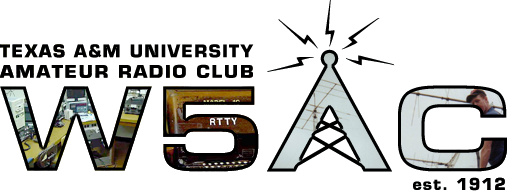



Search:
Callsign lookup:
APRS Locator:
(Type * after callsign for locations that might include a number suffix)
The W5AC shack is capable of tracking satellites and communicating to the ones with amateur radio gear onboard. See our shack info page for a list of our satellite equipment. Note that you can work some satellites with simpler equipment than we have at the shack - for example, a simple HT can receive amateur radio from the ISS. We've tracked satellites since at least Oscar 6 in 1973, and probably eariler.
| Downloadable How-to's | |
|---|---|
| "Emily
Clark (W0EEC)'s excellent presentation on
working
satellites"
- http://www.amsat.org/amsat-new/information/faqs/Intro_sats.pdf |
|
| How to track Satellites from the W5AC shack text file | |
There are other satellite links on our links page. For even more info on Amateur Radio on the ISS, amateur satellites, APRS in space, etc, enter "ARISS" in your favorite search engine.
Don't forget, satellite frequencies are subject to Doppler shift, especially on UHF - downlink frequencies will generally be higher on satellite approach and lower as the satellite moves away. Uplink frequencies - just the opposite, so dial in a lower frequency first.|
|
| W5AC relative to current, 5-minutes-from-now and 10-minutes-from-now positions of the International Space Station (ISS), PCSat and Sapphire satellites. |
ARISS Frequencies (International Space Station)
Amateur radio stations heard by ISS via packet - http://www.ariss.net/
PCSat (AO-16) and Sapphire (NO-45) info - http://www.aprs.org/pcsat.html
Amateur radio stations heard by PCSat - http://www.findu.com/cgi-bin/pcsat.cgi
PCSat Frequencies
AO-51 (AMSAT-Echo) and other AMSAT info - http://www.amsat.org/amsat-new/
AO-51 Frequencies (for the trial period - watch the web for
"Experimenter's Wednesdays" and other changes)